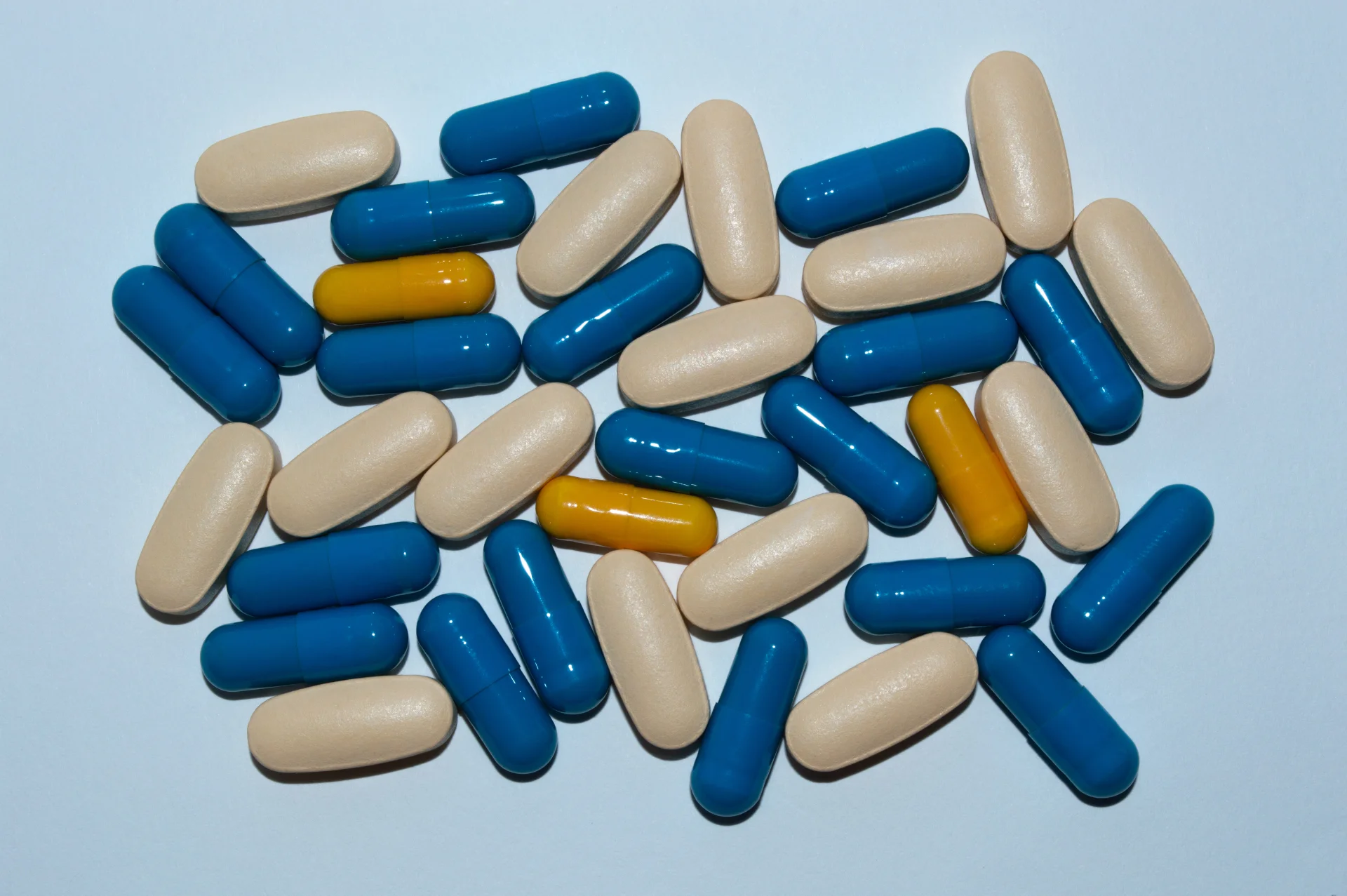Cymbalta (Duloxetine) Addiction Treatment in Long Island
Clear, safety-first guidance on Cymbalta (duloxetine) misuse, withdrawal, tapering, and treatment options plus how Long Island Addiction Resources connects you with accredited, person-centered programs across the full continuum of care.
Covered by most insurance plans
Available to help you 24/7
Table of Contents
Cymbalta (duloxetine) is widely prescribed for major depressive disorder, generalized anxiety disorder, diabetic peripheral neuropathy, fibromyalgia, and chronic musculoskeletal pain. Although not scheduled as a controlled substance, duloxetine’s effects on serotonin and norepinephrine can lead to misuse, physiological dependence, and difficult withdrawal (“discontinuation syndrome”) especially at higher doses, longer durations, or when mixed with other substances.

Understanding duloxetine (Cymbalta) and why problems develop
Duloxetine is an SNRI that inhibits reuptake of serotonin and norepinephrine, supporting mood regulation and dampening pain signaling. Many people experience improved mood, less anxiety, better sleep, and reduced pain. Problems arise when dosing drifts beyond the prescription, when it’s combined with other serotonergic or sedating agents, or when someone stops abruptly and is hit with severe discontinuation symptoms that reinforce continued use.
Common patterns of misuse
- Taking larger or more frequent doses than prescribed to chase energy/elevation
- Combining with alcohol, opioids, benzodiazepines, or other serotonergic agents
- Doctor-shopping or frequent refill requests; saving/stockpiling extra capsules
- Operating vehicles or machinery while sedated or cognitively impaired
Warning signs of duloxetine addiction or harmful use
- Compulsive use despite impacts on work, school, or relationships
- Mood lability, agitation, insomnia, or periods of unusually high energy
- Escalating dose, pill-count fixation, or defensive behavior about use
- Physical red flags: tremor, sweats, dizziness, nausea, blood pressure swings, weight change
- Continuing use to avoid intense withdrawal symptoms after missed doses
Seek urgent care for: severe headache, vision changes, black/bloody stools, uncontrolled bleeding, jaundice, chest pain, seizure, fainting, or suicidal thoughts.
Serious risks to understand
Serotonin syndrome
Potentially life-threatening toxicity marked by agitation, tremor, clonus/rigidity, fever, diaphoresis, rapid heart rate, and blood pressure instability—risk increases when duloxetine is combined with other serotonergic agents (e.g., MAOIs, linezolid, triptans, St. John’s wort, MDMA).
Organ and systemic effects
- Hepatic: elevated enzymes, rare liver failure (risk higher with alcohol/hepatotoxic meds)
- Cardiovascular: blood pressure/heart rate changes; caution in preexisting CVD
- Genitourinary/GI: urinary retention, constipation/diarrhea, nausea
- Neuropsychiatric: agitation, irritability, hypomania/mania, sexual dysfunction
Duloxetine withdrawal (“discontinuation syndrome”)
Stopping suddenly can trigger dizziness, “brain zaps,” nausea, insomnia, vivid dreams, anxiety/low mood, irritability, and sensory disturbances. Symptoms often begin 1–3 days after last dose, peak within 1–2 weeks, and can persist for weeks—occasionally longer—especially after long-term/high-dose use.
Safer tapering principles (for discussion with your prescriber):
- Plan a gradual reduction—often over 4+ weeks; slower for long-term/high-dose use
- Use small step-downs (e.g., 10–25% decrements) with pauses to stabilize
- Address sleep, anxiety, and GI symptoms with targeted, non-serotonergic supports
- Never combine with MAOIs; maintain adequate washout periods when switching meds
Treatment options on Long Island
Care is matched to medical/psychiatric complexity, severity of misuse, home stability, and personal preferences. The goal: safe tapering, symptom management, and durable recovery skills.
- Hospital-based medical detox: 24/7 monitoring for polysubstance use, high seizure risk, severe suicidality, serotonin syndrome concerns, or significant medical comorbidity.
- Inpatient/residential treatment: Structured, live-in setting with daily medical oversight, individualized taper plans, and integrated psychotherapy.
- Partial Hospitalization (PHP): ~20+ hours/week of day treatment; supervised medication adjustments, therapy, and skills training while sleeping at home.
- Intensive Outpatient (IOP): 9–15 hours/week; ongoing taper support, relapse-prevention, and co-occurring care alongside work/school.
- Outpatient psychiatry + therapy: Office-based taper with scheduled check-ins, symptom tools, and psychotherapy; appropriate for stable cases.
Evidence-based therapies and supports
- Cognitive Behavioral Therapy (CBT): Identifies triggers (pain spikes, anxiety surges, insomnia), restructures unhelpful thoughts, and builds coping routines that reduce medication overreliance.
- Motivational Interviewing (MI): Works through ambivalence about tapering and change; strengthens personal reasons for recovery.
- Dialectical Behavior Therapy (DBT) skills: Distress tolerance, emotion regulation, and mindfulness to navigate withdrawal waves and daily stressors.
- Pain and sleep interventions: Non-opioid pain strategies (PT, pacing, anti-inflammatories as appropriate), CBT-I for insomnia, relaxation training.
- Peer support & recovery coaching: Normalizes the process, adds accountability, and provides practical relapse-prevention tools.
- Family education: Aligns expectations, reduces enabling, and builds supportive routines at home.
Co-occurring conditions
Many people taking duloxetine do so for legitimate depression, anxiety, neuropathic pain, or fibromyalgia. Effective plans treat the underlying condition while tapering: psychotherapy first-line, non-serotonergic adjuncts when appropriate, careful cross-titration if switching antidepressants, and coordination with pain/sleep specialists.

Relapse prevention and aftercare
- Written crisis plan (warning signs → actions → contacts)
- Scheduled “booster” visits during high-risk periods (anniversaries, stress peaks)
- Sleep, activity, and nutrition routines that stabilize mood and pain
- Ongoing therapy/skills groups; peer/alumni supports; safe medication storage
Choosing a program
Evaluate accreditation, psychiatric and medical coverage, individualized taper experience, access to pain/sleep specialists, availability of CBT/DBT/MI, and continuity of care across levels. Be cautious of programs promising “rapid detox” from antidepressants without robust monitoring.
Finding help on Long Island
Recovery is challenging and achievable. The right match between clinical needs, level of care, and personal preferences makes a real difference. Long Island Addiction Resources connects you with vetted programs across levels of care such as medical stabilization, residential treatment, partial hospitalization, intensive outpatient, standard outpatient, and recovery housing. We are a connector and guide, not a treatment facility, and we prioritize programs that provide person-centered, evidence-based care.
How to Choose the Right Cymbalta Addiction Treatment Program
If you or a loved one are ready to end your alcohol and drug use, there are many recovery options available near you in Long Island
Are you ready to take back control over your life?
Making the decision to seek help is one of the hardest and bravest steps you can take. We know that the recovery process is not always easy—there may be challenges along the way—but every step forward brings you closer to a life free from the weight of addiction.
Find treatment options covered by insurance















Let today be
your Day 1
We'll get on a call, assess your health history, and verify your insurance. Today is Day 1. We can't wait to celebrate Day 1000 with you!
Fill out this simple form and we’ll call you right back.
Frequently Asked Questions
We'll get on a call, assess your health history, and verify your insurance. Today is Day 1. We can't wait to celebrate Day 1000 with you!
Is Cymbalta physically addictive?
It isn’t a controlled substance, but it can cause physiological dependence and difficult discontinuation symptoms. Misuse (higher/frequent dosing, mixing with other drugs) can become compulsive and harmful.
How long should a duloxetine taper take?
There’s no one-size plan. Many people benefit from slow, stepwise reductions over ≥4 weeks; long-term/high-dose users may need a much slower taper. Always plan with your prescriber.
What helps with “brain zaps,” dizziness, and insomnia during withdrawal?
Slower tapering, consistent sleep routines, hydration/nutrition, and targeted, non-serotonergic symptom supports can help. CBT-I and DBT skills reduce distress during waves.
Can I switch to another antidepressant instead of tapering off completely?
Sometimes. Cross-titration may be appropriate if you still need antidepressant treatment. Your clinician will consider past response, side-effects, interactions, and washout needs.
Do I need inpatient care to stop Cymbalta?
Not necessarily. Hospital/residential care is reserved for high-risk situations (polysubstance use, severe suicidality, complex medical issues). Many people succeed with PHP/IOP or outpatient tapering plus therapy and supports.
